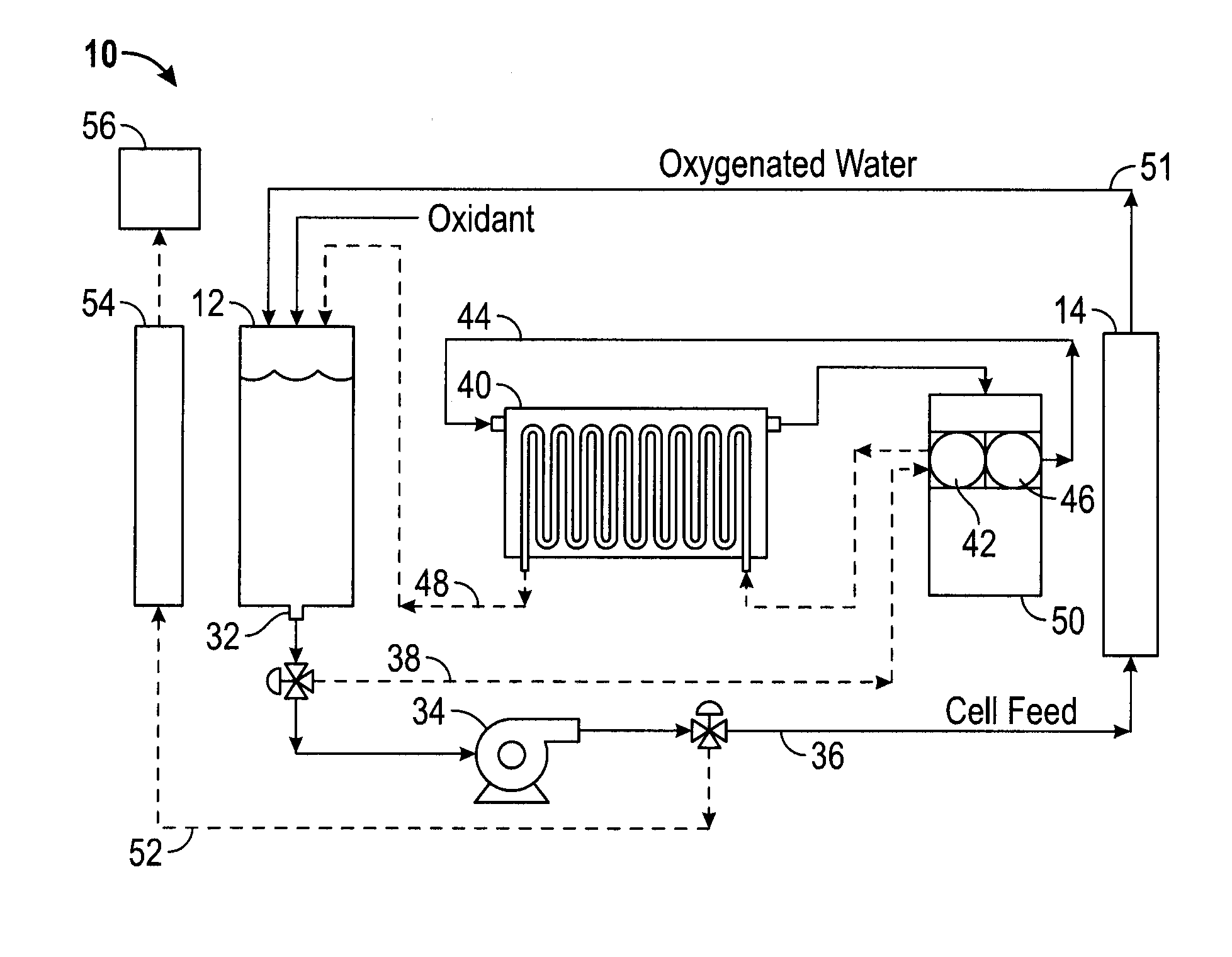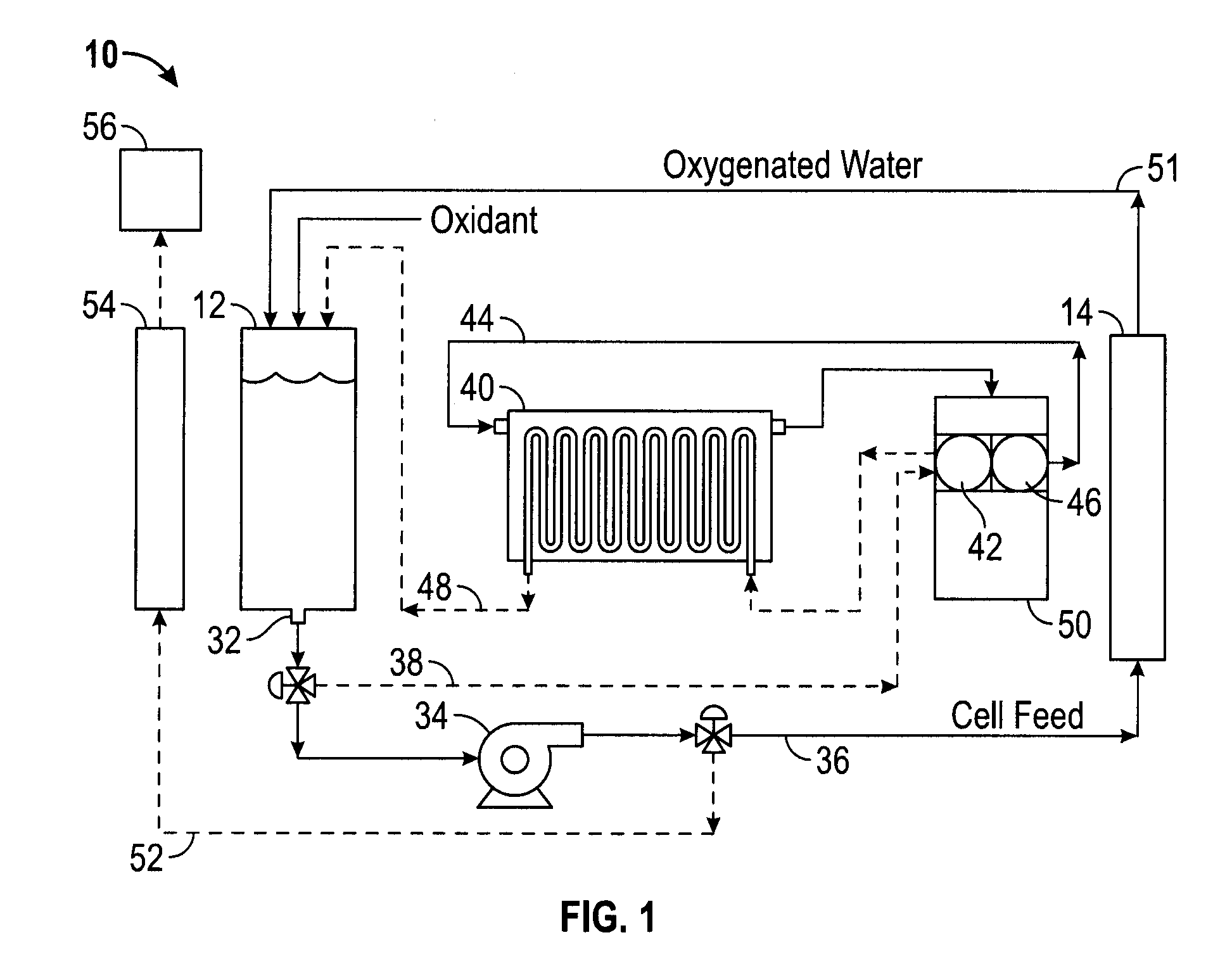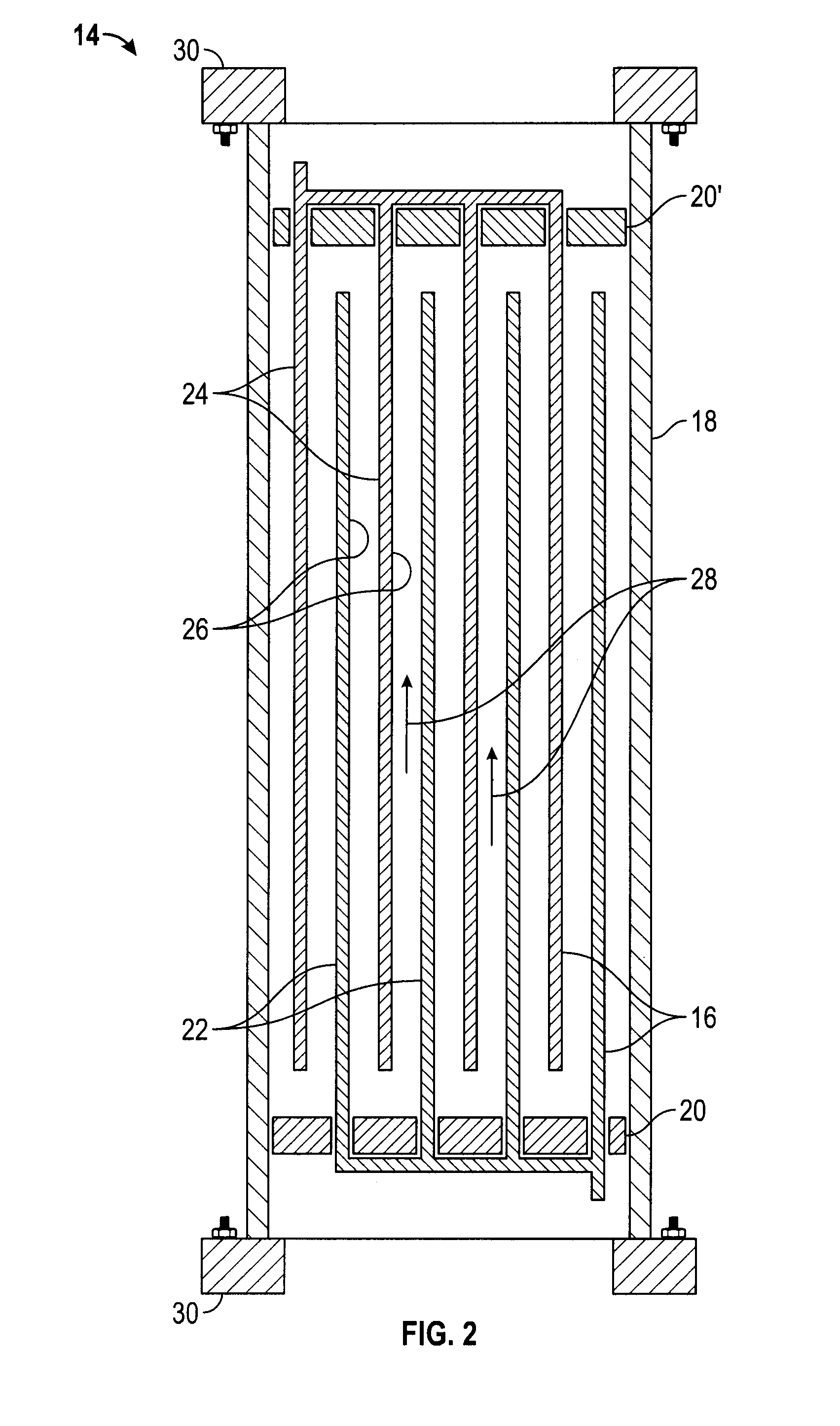Process For Generating Oxygenated Water
a technology of oxygenated water and process, which is applied in the direction of water treatment parameter control, water/sewage treatment by oxidation, treatment water, etc., can solve the problems of generating oxygenated water that does not the oxidation process is generally considered very inefficient, and the oxidation process is not easy to achieve the desired oxygen level. , to achieve the effect of increasing the oxidation-reduction potential (orp) of the water, increasing the level o
- Summary
- Abstract
- Description
- Claims
- Application Information
AI Technical Summary
Benefits of technology
Problems solved by technology
Method used
Image
Examples
example 1
[0043]A 50 gallon sanitized holding tank was filled with chlorinated well water used commercially for bottled drinking water. The water was measured for quantity of dissolved oxygen (ppm or mg / L DO), the dissolved oxygen relative to equilibrium oxygen saturation, i.e., percent of saturation (% DO), temperature, and the emf or oxidation-reduction potential (ORP). Approximately 10 mL of Clorox® household bleach was added to the 50 gal water tank. The water was pumped from the bottom of the tank through two pumps to two 33.5-inch long electrolytic cell canisters in parallel. Each electrolytic cell canister had a total of 8 titanium electrodes, 4 anodes and 4 cathodes. The electrodes were each 2 inches wide, 30 inches long and 1 / 16 inch thick. Electrode spacing was 0.2 inch. The cell housing was made of Delrin®, a transparent, electrically insulating acrylic manufactured by DuPont. Water exiting the cell was returned to the holding tank through a vertical downcomer pipe internal to the ...
example 2
[0047]A similar test was run wherein the electrolytic cell voltage was less than 300 mV and was monitored using a dataTaker® DT82E Series 2 data logger designed especially for R&D and environmental monitoring and available from Computer Aided Solutions in Chesterland, Ohio. An outer cylinder surrounding the cell feed tank was filled with ice cubes to act as a cooling jacket. Fresh ice cubes were added when necessary to maintain the temperature of the cell feed water in the feed tank at 50° F. After addition of 10 mL Clorox® to the 50 gal tank of cell feed water, the ORP of the water increased to 830 mV. The water was circulated through the electrolytic cells for five days. On the third day the dissolved oxygen content of the water increased to 12 ppm and 115% of saturation. FIG. 4 shows the increase in dissolved oxygen content over time.
TABLE 3Example 2 Oxygenation SummaryDO ppm% DOT, ° F.ORPWater Initially9.07250229Water After1211552834Electrolysis
example 3
[0048]Water was oxygenated using the same procedure as described in Example 1, but without addition of Clorox® prior to electrolysis. A summary of the results is given in Table 4 below. As can be seen, oxygenation still occurs, but to a lesser level than with addition of a chemical oxidant prior to electrolysis. Oxygenated water was recycled to the feed tank and electrolysis was continued for several days.
TABLE 4Summary of Electrolysis without Chemical OxidantDO ppm% DOT, ° F.ORPWater Initially3.12*40*72318Water After8.298 72732Electrolysis*measured at 81° F.
PUM
| Property | Measurement | Unit |
|---|---|---|
| oxidation-reduction potential | aaaaa | aaaaa |
| oxidation-reduction potential | aaaaa | aaaaa |
| voltage | aaaaa | aaaaa |
Abstract
Description
Claims
Application Information
 Login to View More
Login to View More - R&D
- Intellectual Property
- Life Sciences
- Materials
- Tech Scout
- Unparalleled Data Quality
- Higher Quality Content
- 60% Fewer Hallucinations
Browse by: Latest US Patents, China's latest patents, Technical Efficacy Thesaurus, Application Domain, Technology Topic, Popular Technical Reports.
© 2025 PatSnap. All rights reserved.Legal|Privacy policy|Modern Slavery Act Transparency Statement|Sitemap|About US| Contact US: help@patsnap.com



